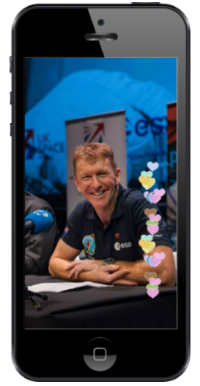
 Periscope is a relatively new live-streaming app from Twitter, but it already has nearly 2 million daily users watching 40 years of video per day.
Periscope is a relatively new live-streaming app from Twitter, but it already has nearly 2 million daily users watching 40 years of video per day.
At BIS we trialled using a Periscope live-stream of Tim Peake’s final press conference in the UK before his mission launch to the International Space Station (ISS). We achieved around 650 live views with hundreds more over the next 24 hours, and more importantly we learned a lot.
If you’re thinking about using Periscope here are 4 things that you should consider:
1. Right topic and right time
Don’t just rush out to use Periscope for everything; make sure your ‘scope’ adds value to the overall communication objectives. We picked Tim Peake for our inaugural scope as the first UK astronaut to visit the ISS was a story that could help us reach a new audience. We wanted to provide an experience that was personal, exclusive and innovative. Our aim was to capture the excitement of the event and give people the opportunity to engage in a way they couldn’t through broadcast media. Periscope linked in well with our wider activity showcasing science investment and inspiring people to take an interest in the UK’s first funded astronaut.
2. Get the right kit
The audio and visual quality of your scope is important. You don’t always have the luxury of being right next to the action, but you can overcome this with some inexpensive equipment. We used a wireless microphone, iPhone lens kit and a tripod. Of these I would say the audio was the most important factor in our broadcast, with the speakers themselves being quite static, the quality of the audio feed was critical to keep viewers engaged for what is an hour-long event. We were covering questions from the school children and journalists in the audience so we needed comprehensive audio coverage of the whole room with a quality microphone.
3. Engage with those watching – offer something new
Periscope gives you the ability to get direct to an audience rather than relying on the media. To be engaging you need to offer something different to the broadcast channels. We wanted to provide a VIP experience to our viewers so we invited questions, picking 2 to ask at the press conference. Of course you can run into problems with trolls, but Periscope provide plenty of advice on how to deal with them using blocking tools. We had a few friendly volunteers on standby to post questions to push down any offensive material until we blocked the offending user. Luckily on the day the scope was troll-free.
4. Promote your scope in advance
You wouldn’t send out invites to a press conference at the last minute so make sure you give plenty of notice for people to tune in. Even with a big following, announcing it on the day can only reach so many people, so promote, promote and promote again. Tap up your influencers and encourage them to share on their channels.
Not everyone can go viral like #DrummondPuddleWatch, but if you follow these 4 simple steps you’ll get the most out of your scope.
Do leave any comments or questions below. Happy scoping!
Featured image by the US Navy on Wikimedia. The officer pictured is Captain Raymond W. Alexander, Sr. and the photo was taken in 1942.
Stay up-to-date by signing up for email alerts from this blog.
Leave a comment